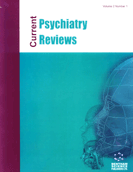Abstract
Since the introduction of DSM-III in 1980 the prevalence of mental disorder increased dramatically. Recent figures suggest that about one third of youth and almost half of the adult population meet the criteria for at least one mental disorder in their lifetime. At least three interacting pressures contribute to diagnostic inflation of mental disorders: 1) the aggressive marketing strategies of drug companies, 2) reification of categories and 3) pressure on doctors. The diagnostic bubble will likely inflate further with the introduction of DSM 5 in 2013. This starts, firstly, with the editorial intention of moving to dynamic DSM-versioning, which would alter the relative contribution of editorial and empirical labor to shaping the DSM contents. Second, new disorders at the fuzzy boundary with normality will be introduced. And third, the diagnostic thresholds of many disorders will be lowered. Further expansion of diagnostic boundaries will add mostly to the already significant number of mild and threshold cases receiving treatment, leaving less time, money and effort for the severely ill.
Keywords: DSM, Medicalization, Reification, Unintended consequences, Pharmaceutical companies, psychiatric diagnosis, trivialize, exacerbation, Hyperactivity, operationalizing
 13
13

